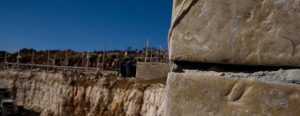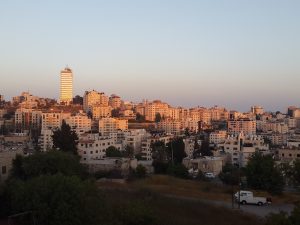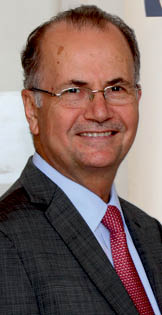In a triumph of hope over history, as announced by the New York Times in 1993, the Oslo Accords (1993), followed by the Paris Economic Protocol (1994), were signed, marking the beginning of a five-year transition period towards a Palestinian state based on the 1967 borders. The imminent state was even dubbed by some as the Singapore of the Middle East due to its potential to become an economic powerhouse.
The political optimism during that period fueled strong economic growth, with Palestinian GDP growing in double digits between 1997 and 1999. By the same token, the period witnessed strong private-sector investment, with many diaspora Palestinians returning to their homeland in order to invest in the development of key Palestinian sectors. That period also saw growth in the number of banks operating in Palestine and growth in trade. In 1999, Palestinian unemployment fell to a record low of 11.8 percent.
With the turn of the century, the political optimism dissipated as a series of Israeli measures effectively distorted and subverted the peace agreements, including rampant settlement expansion, the isolation of Jerusalem, the siege of Gaza, and the building of the separation wall, as well as the refusal to cede control of Palestinian natural resources and international crossing points.
Today, 20 years after the short-lived economic boom, recent data and experts point to political deadlock and a weakened economy. With economic captivity to Israel on the one hand and to donor aid on the other, the results are clear: unprecedented unemployment levels, low income per capita, and a significant reduction in the share of productive sectors such as agriculture, industry, and tourism in the Palestinian economy.

The Palestinian economy has mutated into an import economy, with imports representing three times the value of exports; 85 percent of Palestinian exports go to Israel, and two-thirds of Palestinian imports come from Israel. In addition, a significant percentage of the Palestinian workforce is employed in Israel and in settlements (around 130,000 workers with an annual income of US$ 2 billion). But despite these employment figures in Israel, unemployment has soared to nearly 27 percent, with youth unemployment (ages 20 to 24) at over 44 percent.
Similarly, Palestine’s near complete reliance on donor aid for the past 20 years − which has been used mostly to cover current expenditures while a small portion has been spent on infrastructure investments − has resulted in a hugely inflated current budget and aid dependency. Years of underinvestment in energy infrastructure, health, and agriculture has resulted in a taxing annual import bill – for these sectors only – of more than US$ 2.5 billion, which amounts to half of our imports from Israel.
Given the political deadlock that we have reached, the Palestinian leadership is in the process of reviewing the framework that governs our relationship with Israel. The notion of economic disengagement from Israel is top of mind for the Palestinian leadership; and with it the need to revise/replace the Paris Economic Protocol that was signed between the PLO and Israel in 1994. The cornerstone of the Paris Protocol was the creation of a custom union with free movement of people and goods, and unified taxation.
In order to make disengagement possible, it is clear that our national struggle for freedom must be coupled with a national program to build Palestinian economic resilience and independence that enables Palestinians to endure and to thrive. Such a program must include the following elements:
- Striving to secure economic rights, which include the accessibility to natural resources, alongside full Palestinian political rights
- Investing in critical infrastructure as a part of a national development program, particularly targeting marginalized areas such as Jerusalem, Gaza, and the Jordan Valley, to preserve our national rights and support the resilience of Palestinians in those areas
- Investing in human capital through focusing on creating a highly skilled workforce in order to build a knowledge-based economy that is fueled by critical thinking, creativity, and innovation
- Optimizing the use of our limited public financial resources through expanding partnerships between public and private entities to bridge the investment needs and opportunities in vital sectors
Today, the Palestine Investment Fund (PIF), Palestine’s sovereign development fund, has launched a US$ 2.5 billion seven-year impact investment program for the period 2018–2025. The program aims to build a resilient, innovative, and vibrant economy that enables the Palestinian people to thrive. The program has set forth the following clear impact targets:
- Decreasing imports from Israel by half through investments in the energy, agriculture, industry, health, tourism, education, and technology sectors
- Creating 100,000 employment opportunities for Palestinian youth
- Supporting the growth and scale-up of Palestinian SMEs and technology startups, with a view that transitioning towards a knowledge-driven economy is the way forward for Palestine
- Supporting the economies of marginalized areas such as Jerusalem, Gaza, and Area C
The success of this national program requires a collaborative effort between the Palestinian public and private sectors, the international community, and the Palestinian diaspora. For one, we view genuine partnerships as the solution to bridging the public investment gap and reducing funding fragmentation, in light of the increasingly stretched public finances and shrinking donor support. Mobilizing private capital for public good can also spur innovative solutions to Palestine’s most vexing socioeconomic problems. On the other hand, these partnerships will also stimulate private-sector growth and propel job creation for Palestine’s youth.
The way forward is through economic resilience and disengagement.
For PIF, partnerships and “crowding in capital” have become synonymous with a successful investment strategy. Over the past ten years, PIF has invested over US$ 1.5 billion in tens of vital projects in strategic sectors, US$ 1 billion (two-thirds) of which were contributed by partners from all over the world. PIF and its partners have supported over 69,000 jobs and 2,500 small and medium enterprises. These projects have also contributed around 1.5 percent to GDP annually (~US$ 200 million in 2017).

PIF’s success in attracting investors to ostensibly high-risk sectors has been made possible through PIF’s adoption of a de-risking approach, built on the notion that to bring investors to Palestine, we must reduce the risk of development to a reasonable degree. PIF thus takes the lead in originating ideas, bearing the full cost of development, which often takes more than seven years to receive project approvals that are frequently withheld by Israel. Once a project is approved, and the development risk is reduced, PIF embarks on attracting investors, both equity partners and financiers.
PIF’s de-risking approach can be replicated and expanded by the Palestinian government and the donor community through a set of incentives and public-private partnerships to trigger innovation in solving our most daunting challenges and unleash the potential of Palestinian businesses, large and small, to do well while doing good.


